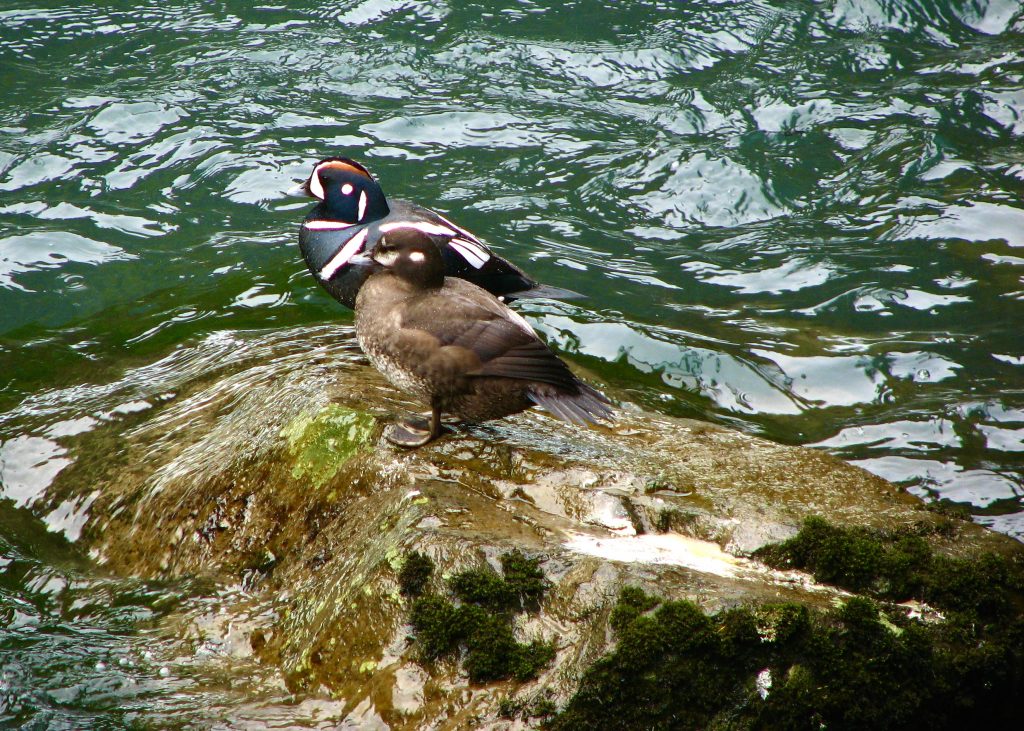
With plumage befitting an Italian court jester (whose tricks or histrionics give this species its scientific names), the male Harlequin Duck is easily recognizable. The female, as is true with most ducks, is much more nondescript, with only a white cheek and a white dot near the rear of the head to break up the lightly mottled browns and grays. Harlequins spend their winters along the coast in the rips and whitewater of rocky shorelines. But they head inland in the springtime, choosing steep, fast, rocky whitewater streams in which to breed. Once the nest is built and the eggs laid the drake heads back to the coast, leaving the hen to incubate the eggs for about 4 weeks.
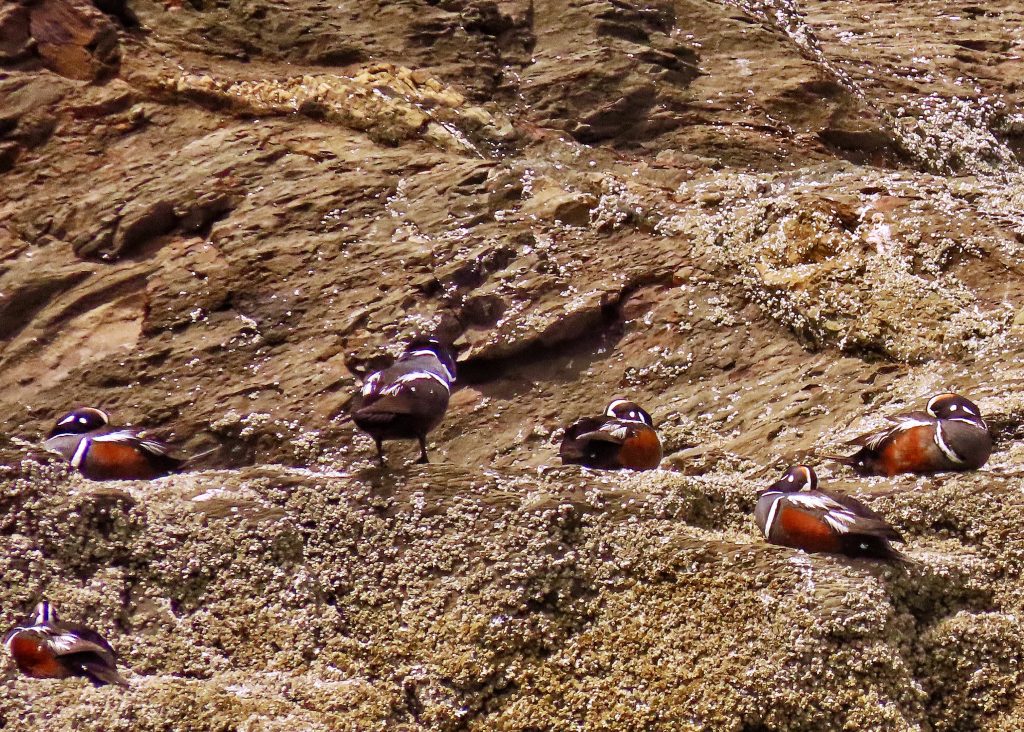
After about 7 weeks of eating a diet of invertebrates and small fish the ducklings, which are born precocious and ready to swim, are ready to fledge, and the family flies back to the sea, where they reunite with the drake. Juvenile females often winter with the family group, but the young males scatter to find their own wintering grounds.
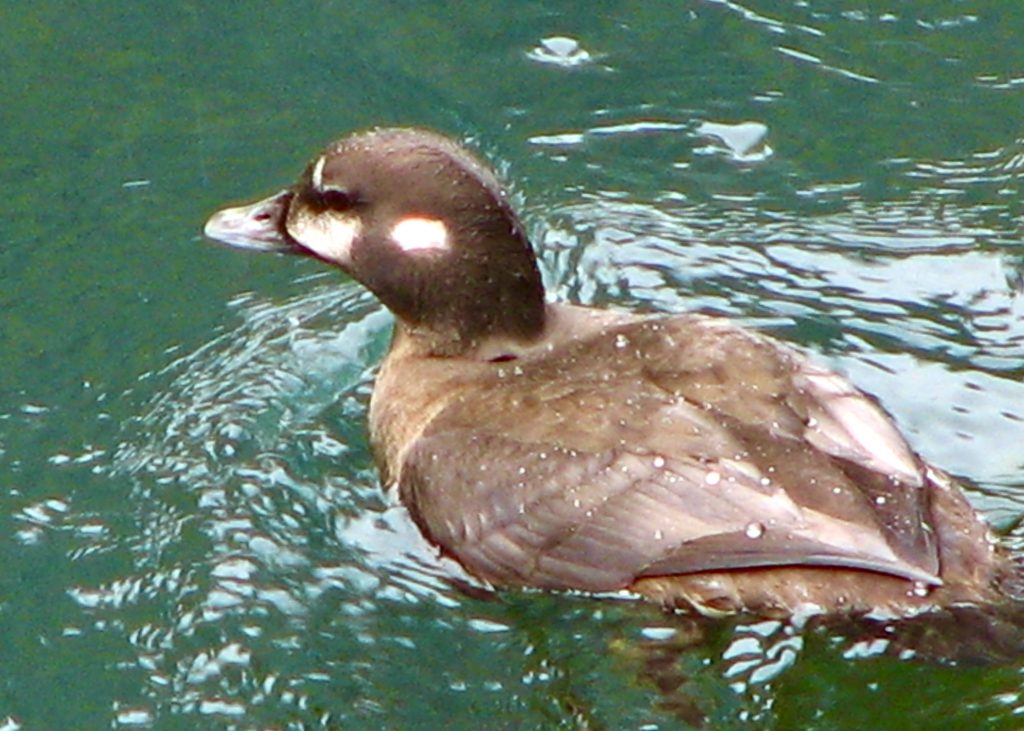
Many of the Harlequins found on our coastline breed in the Cascades, though apparently not in the Coast Range. But some of them migrate all the way to the Rocky Mountains, and some come from breeding areas in the far north. I have seen this species at Haystack Rock in Oregon, at Beard’s Hollow on the southern end of the Long Beach Peninsula in Washington, and inland on the Little White Salmon River in Skamania County, Washington.
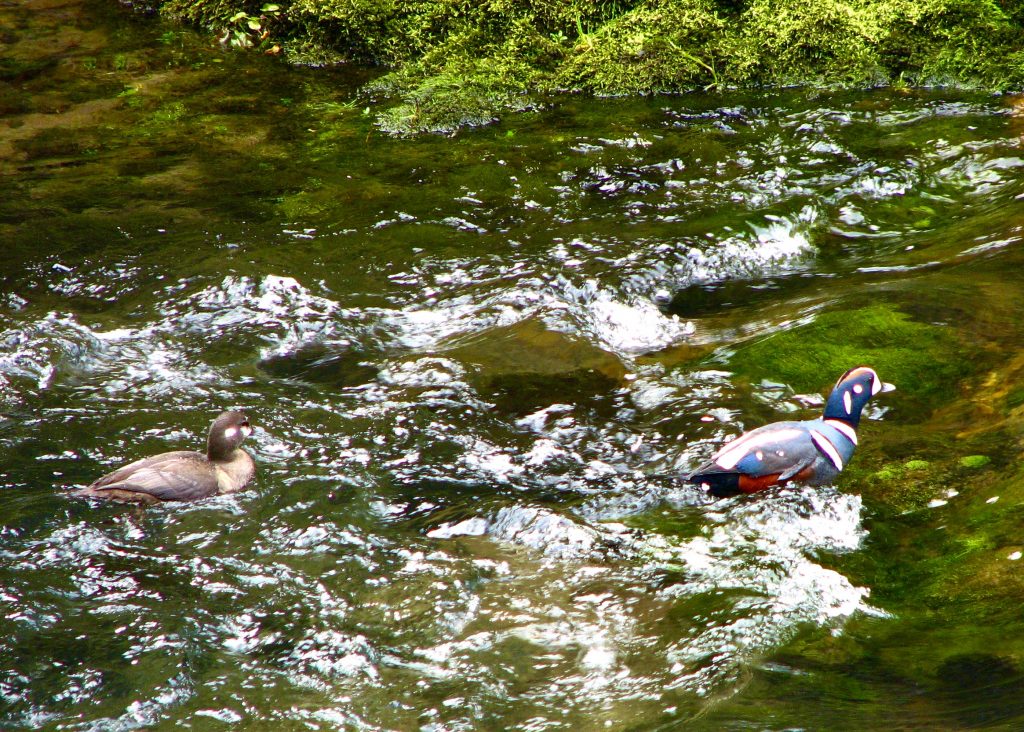
https://www.allaboutbirds.org/guide/Harlequin_Duck/overview
https://www.audubon.org/field-guide/bird/harlequin-duck
Size- Medium sized duck
Habitat- Rocky coastal areas in fall/winter; steep, rocky mountain streams in spring/summer- males are also found along the coast in summer after their foray into the mountains for breeding.
Range- Northern California to Alaska in fall/winter; western Wyoming to Alaska in spring/summer
Eats- Invertebrates and small fish
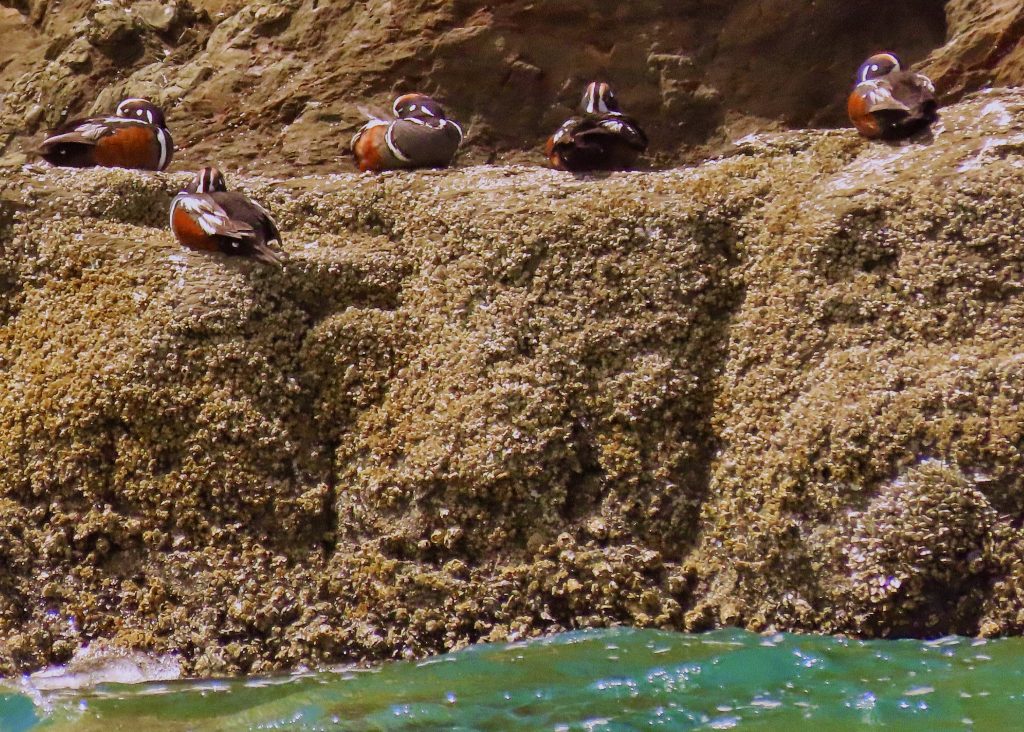
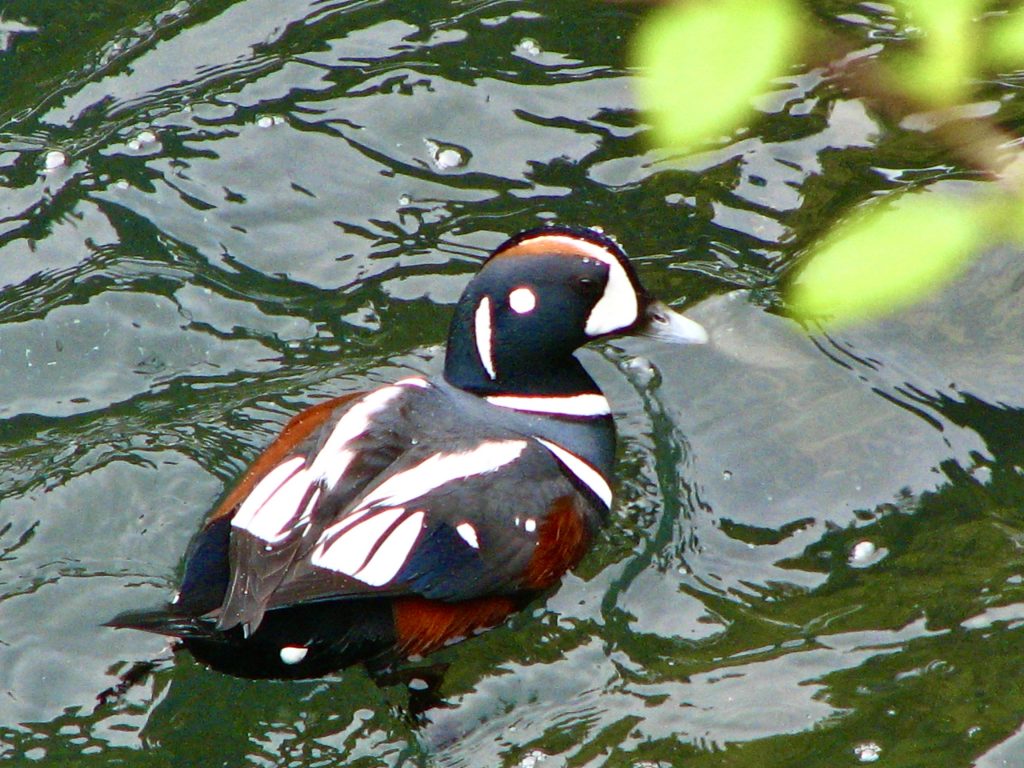
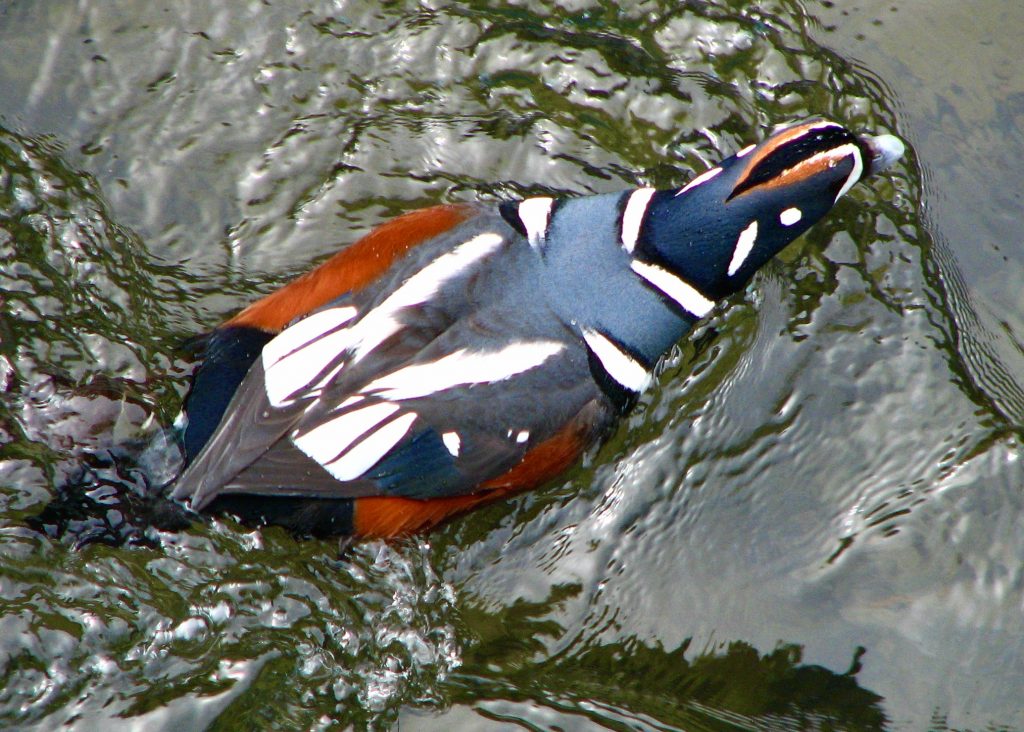
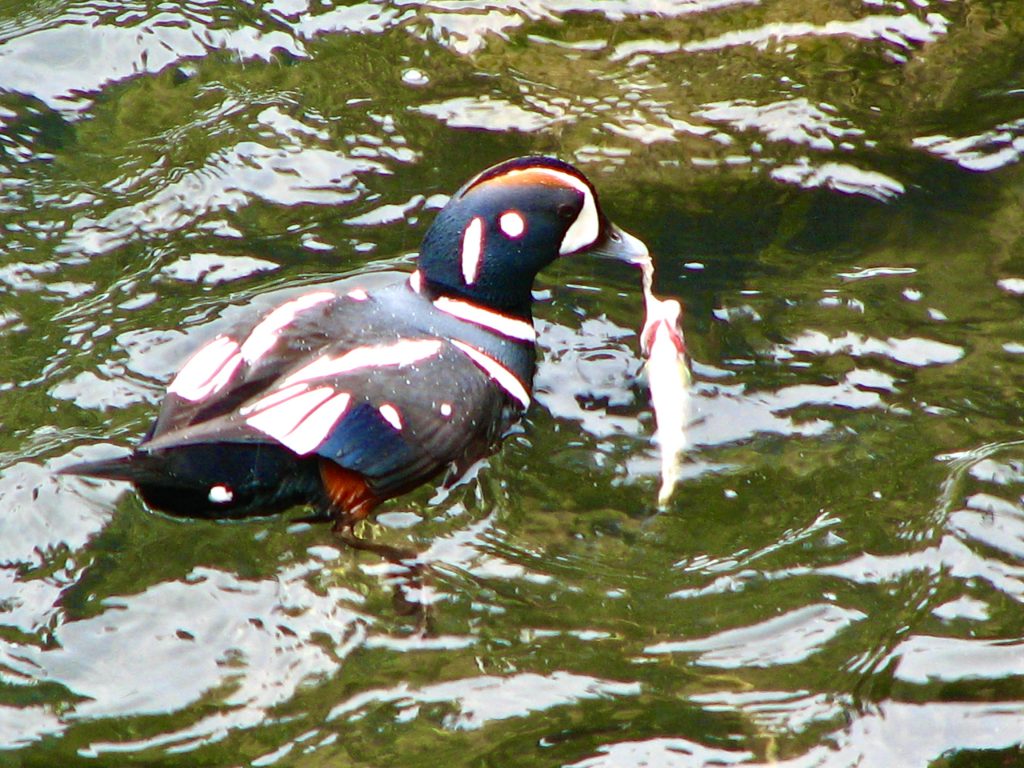
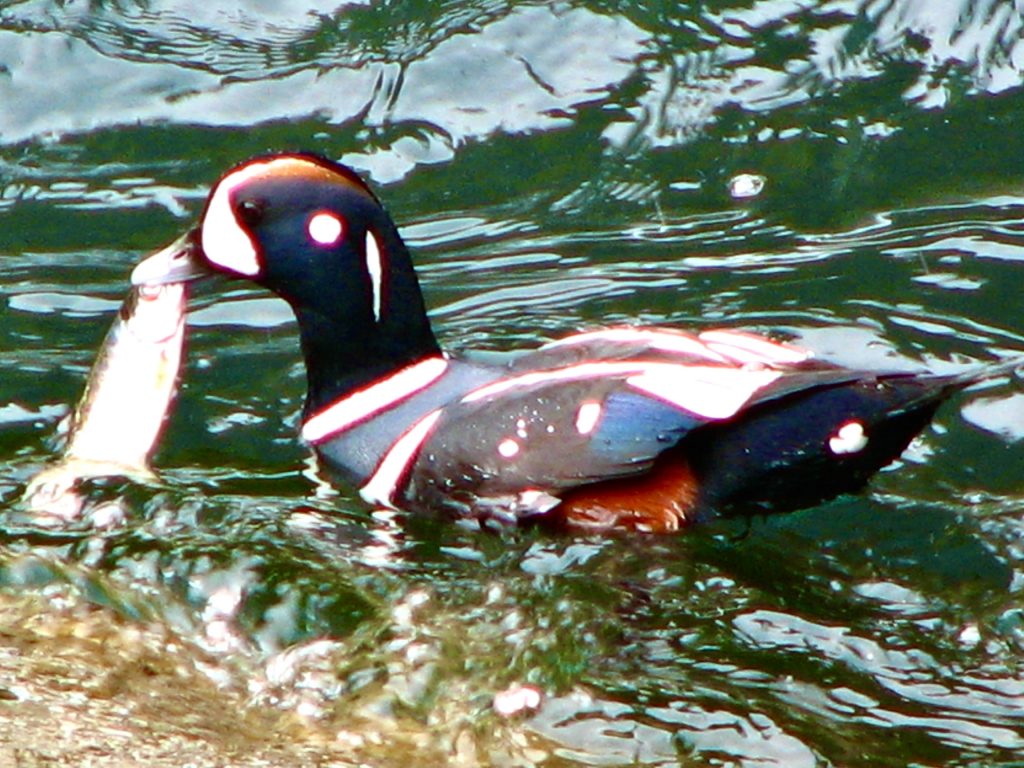
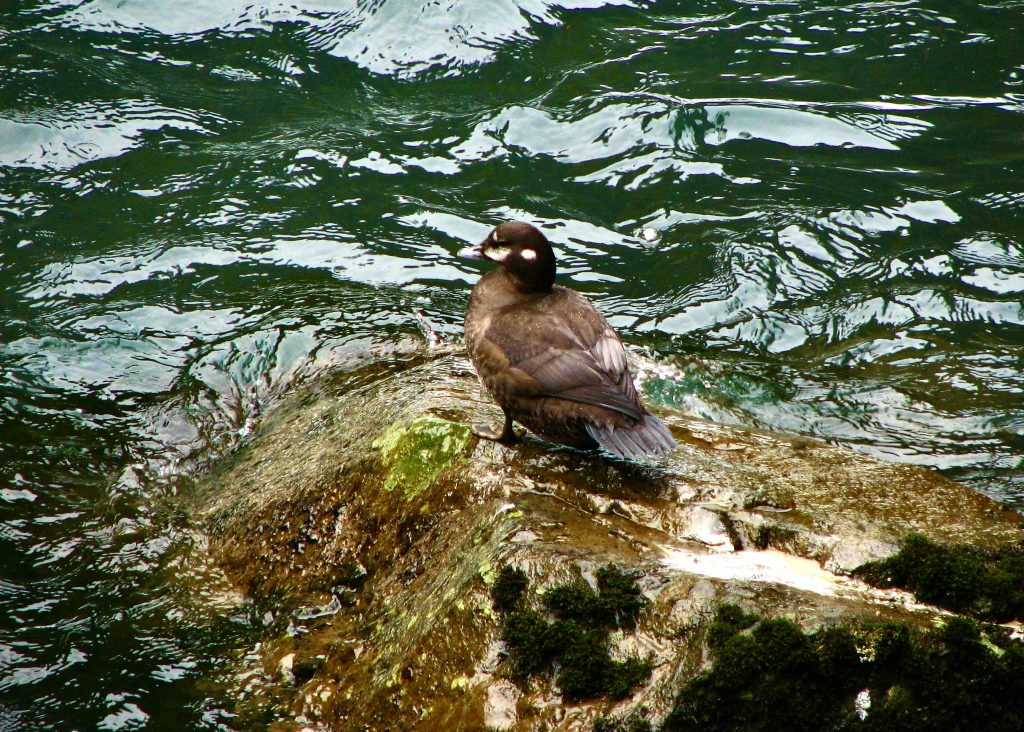
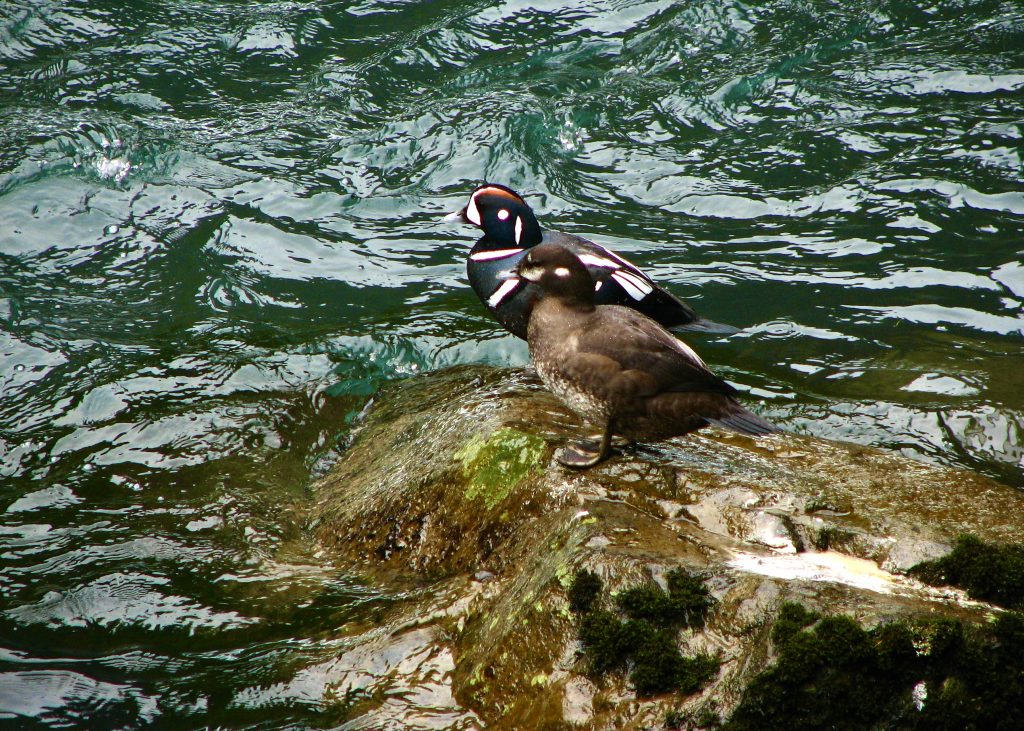
Thank you for making this. I lived in P.C. OR. for a few years and love that place! So many areas I wanted to check out. Now , I can. Thanks, again.
Thank you for appreciating it. Hope you find lots to enjoy here!
Thank you for for informing and sharing us the info and photos of these lovely birds.
You are welcome!